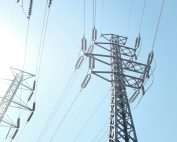The European Commission has received the Finnish government’s approved national recovery and resilience plan. The document includes support for offshore wind development in the Åland Islands region.
According to the EC, Finland has requested financial assistance in the form of grants under the plan amounting to EUR 2.1 billion. The Finnish plan is part of Finland’s sustainable development program. The country’s national investment will be based on four pillars – green transformation, digitalization and the data-driven economy, employment and skills, and social and health services. Green transformation activities include research and investment. Support for the development of renewable energy sources and energy infrastructure is envisaged at EUR 318.7 million.
Finland will support offshore wind energy, keeping in mind the EU strategy for offshore wind adopted in 2020. This sector, as well as other energy technologies (photovoltaics, biogas, ecological transport fuels, geothermal, heat recovery) will receive support of the order of EUR 161 million, while the amount of EUR 155 million is planned for the development of transmission and distribution infrastructure – we read in the Finnish plan.
Finland wants to support the development of offshore wind energy in the Åland area within the framework of the Åland Investment and Reform Package (Reform No. P1C1I3) with funding worth EUR 2.7 million. The plan is to build an offshore wind complex with a total capacity of 6 GW, which will be combined with a power-to-X solution, or hydrogen production, in this case green hydrogen. The Åland Islands Maritime Development Plan identifies areas for energy investments of 1,000 km2.
As indicated in the national recovery and resilience plan, the project will be large and demanding and therefore the use of external expert services is necessary. The local authority of Åland has already commissioned the Lappeenranta University of Technology to develop a roadmap, which will indicate the possibilities for offshore wind energy construction. It will be presented in June 2021. The project is estimated to be completed within 10-15 years, with the planning phase lasting until 2024.
Finland currently operates one offshore wind farm with a capacity of 42 MW. As indicated in the plan, Finland, due to its location, needs to consider the issue of freezing weather and sea freezing and the impact of this aspect on farm foundations in its offshore wind development plans. Secondly, although Finland has expertise and infrastructure in shipyards, it has some gaps in offshore wind know-how. According to Finnish national recovery and resilience plan, the development of offshore wind energy sector in Finnish waters and the related infrastructure should continue. A condition for this development is the construction of at least one large-scale demonstration project over the next few years. Furthermore, there is currently no support system for energy production in offshore wind farms in the country.














